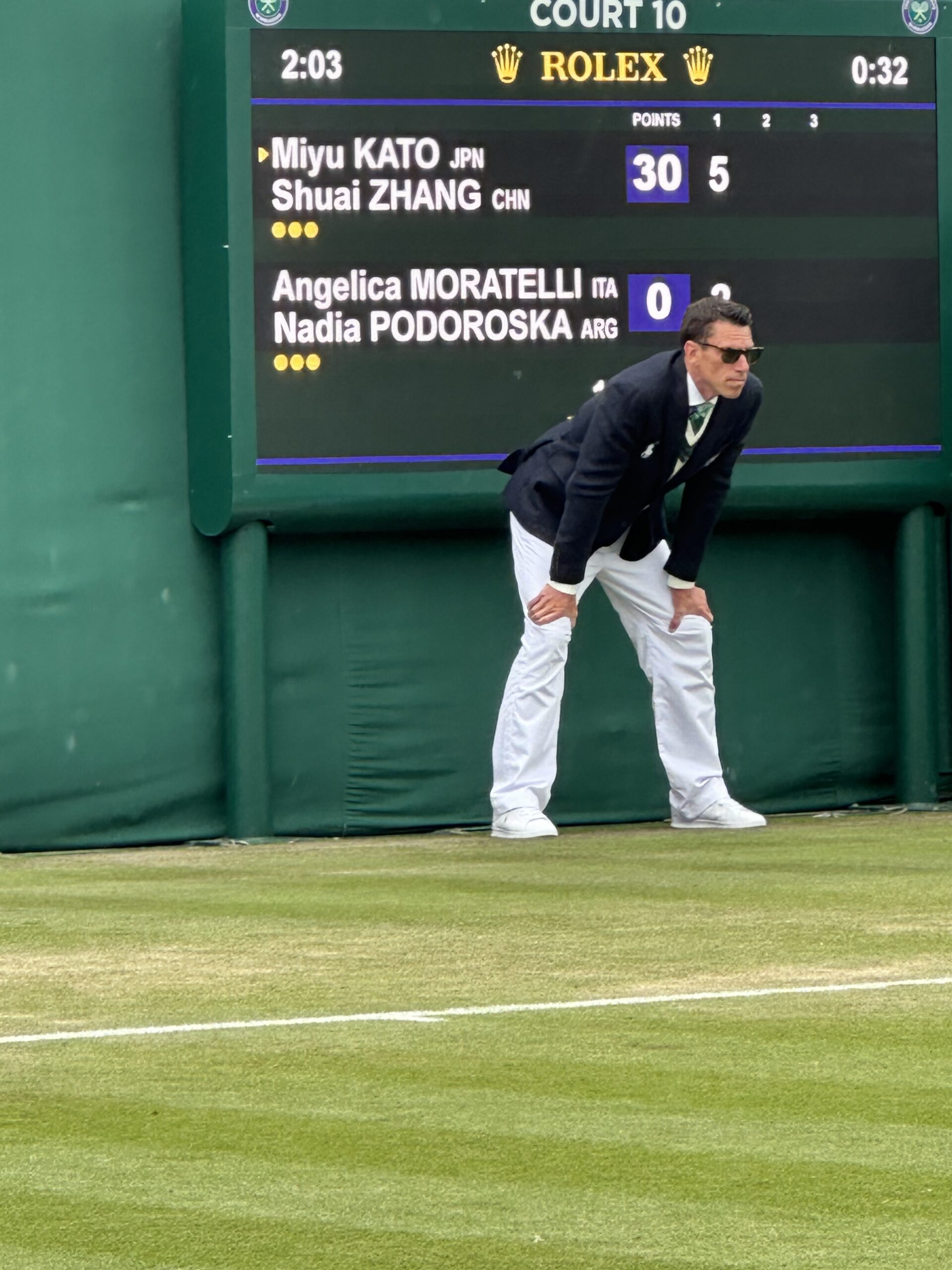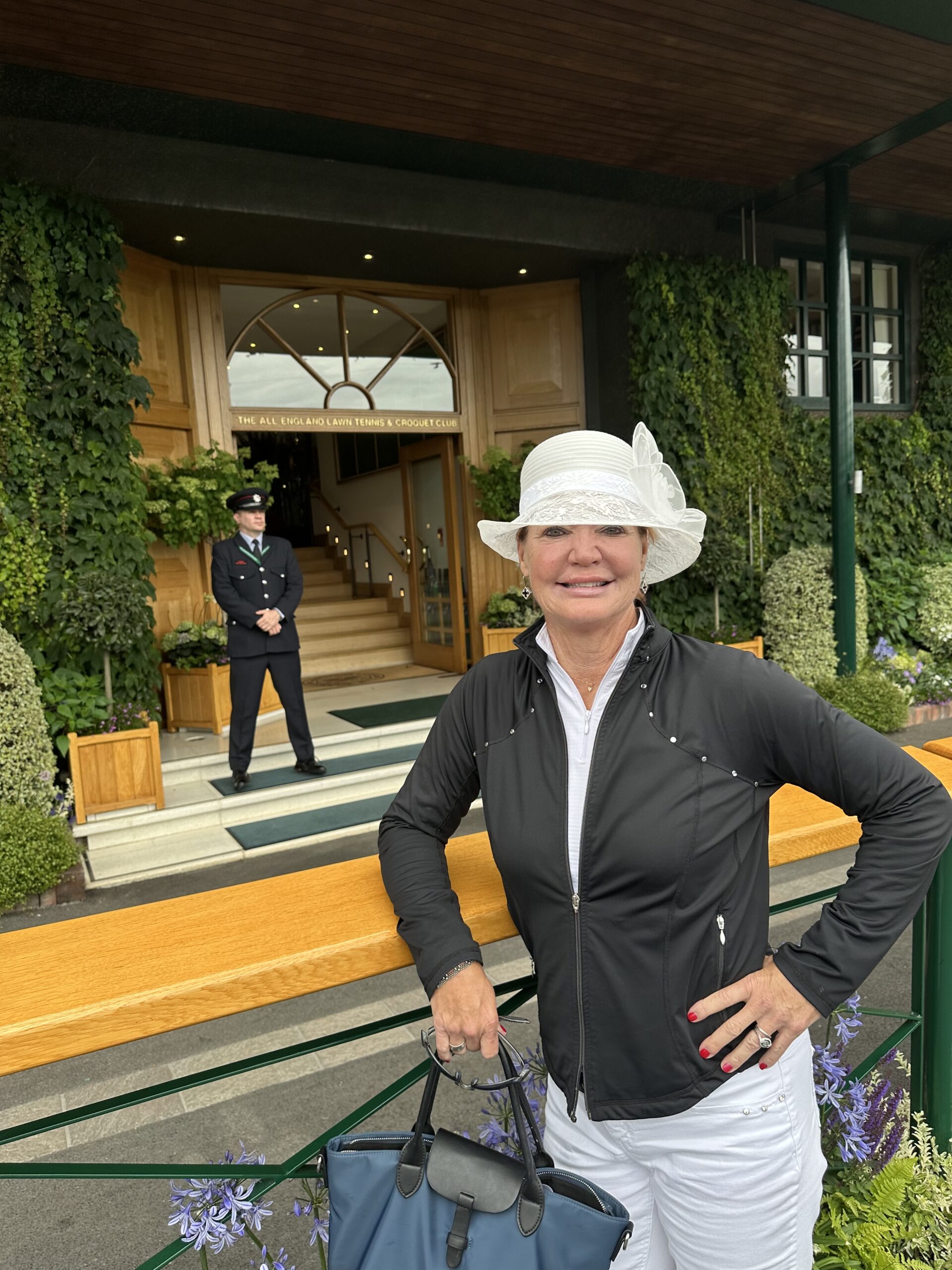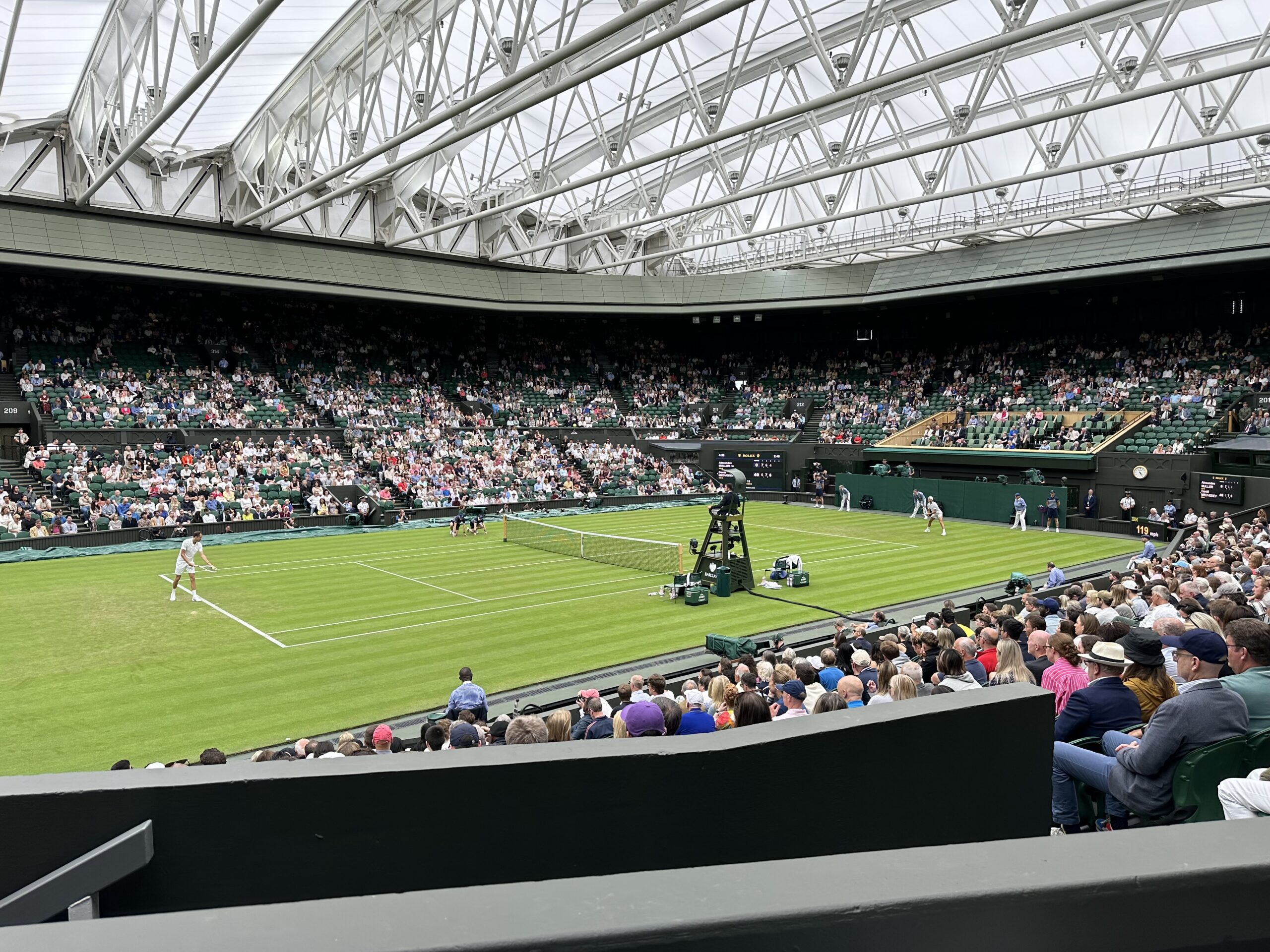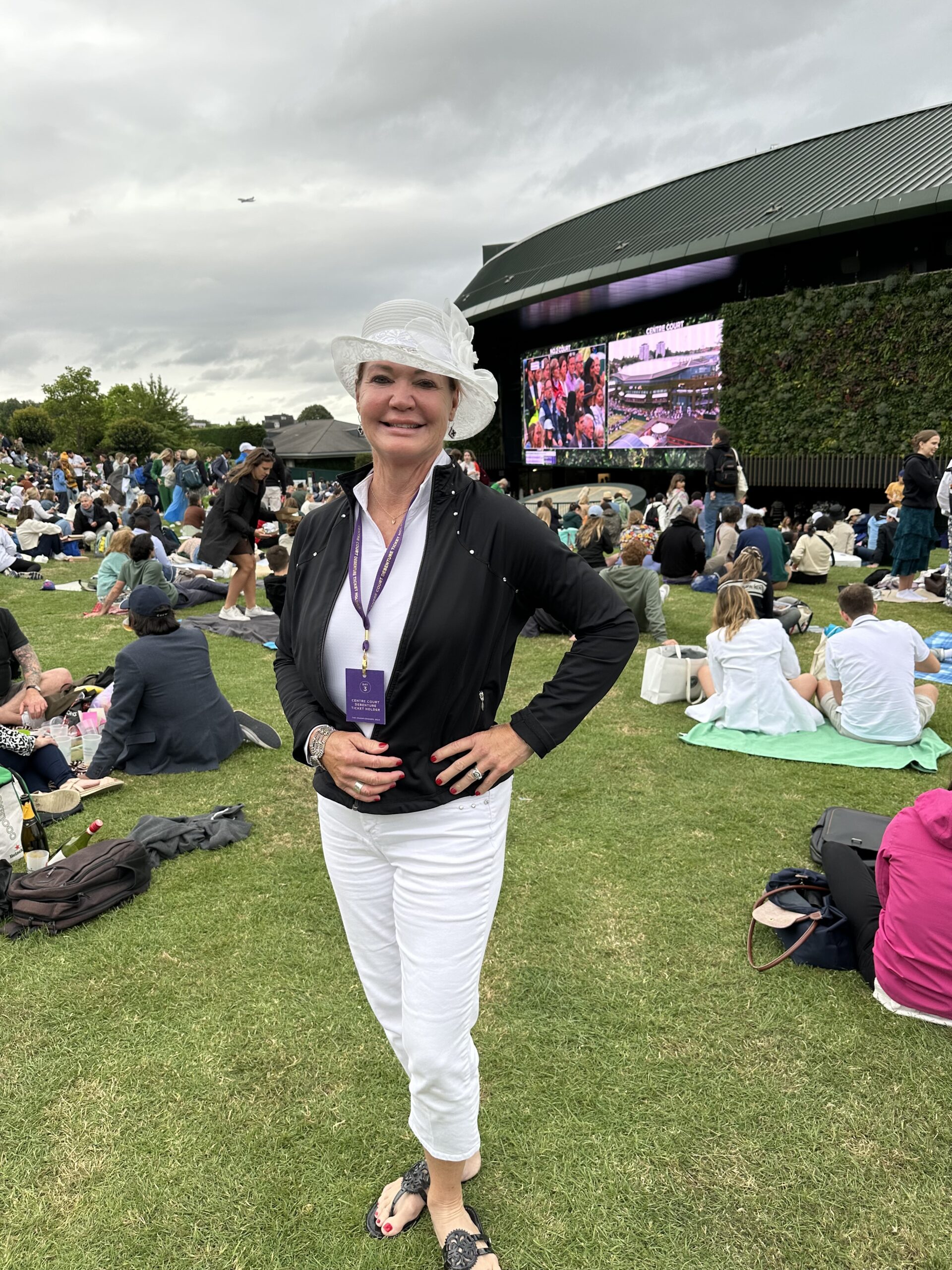Wimbledon
You don’t have to be a fan of golf to be aware of the Masters at Augusta.
And you don’t have to be a fan of tennis to know what Wimbledon is.
They are events held annually that are special and have a tradition and history that rises above the rest in their respective sports.
They are notable stops in their yearly Grand Slam competition- the games that are the most meaningful.
This is about Wimbledon, held in early July for two weeks. In Great Britain they call it a fortnight.
We were there for Day 3 of the championship last week.
I had been there previously, but Jamie, a dyed-in-the-wool tennis buff and player in her own right, had never experienced its uniqueness.
When you see it on television you see the courts and the surrounding scene mostly from above.
But being there is unlike anything of its kind.
Wimbledon is a district and town 8 miles south-west of the center of London.
It is marked by the green trees and lawns of a picturesque area that is particularly appealing for families to young professionals. But to the townspeople and to the world it is the scene of a singular event.
I grew up in Kew Gardens Hills in Queens, one of the five boroughs of New York City.
I lived ten minutes from Forest Hills, where the West Side Tennis Club hosted 60 editions of the U.S. National Championships before it moved to nearby Flushing and renamed the U.S. Open.
During my high school years (I attended Forest Hills High School), I would see most of the ten day tournament. At that time, Australia was the major force in the sport.
Names like Lew Hoad and Ken Rosewall were the most prominent. One year Harry Hopman, the famed Aussie coach brought over five young faces to begin their careers. Two of them were Rod Laver and Roy Emerson.
At that time, three of the four Grand Slams were played on grass. Only the French Open (red clay) was not.
Now, only Wimbledon has as grass surface. The U.S. Open and the Australian Open are hard-court surfaces. Because I go way way back, it is difficult for me to consider the U.S. Open with anything near the charm the American version of the Slam had when it was at Forest Hills.
What I remember most, was walking along the many field courts on the way to the Stadium itself.
Watching the various matches very close to the action and smelling the grass surroundings was unforgettable.
That’s why I wanted to kind of re-live that time and introduce Jamie to that feeling was the reason we chose Day 3 at Wimbledon. Lots of action on the outside courts.
The grass courts of today appear to be cut much shorter than the ones I remember when I was a kid. Maybe I’m just imagining that, but the grass surface at Wimbledon resembled a the way greens are cut on a high-level golf course. They are that fast, and that slick.
Entering the premises in what is truly a tennis museum was electric.
The greenery adorning Centre Court and elsewhere was breathtaking.
As is the case at Augusta, once you enter the hallowed grounds of Wimbledon you are hit with the efficient organization and friendly treatment by the marvelously well-trained staff.
We found a couple of seats on court 10 where a women’s doubles match was going to be played once a couple of brief showers subsided.
The various courts were covered, of course, and when the rain stopped, the machine-like hustle of the youngsters moving in lightning speed worked in impressive teamwork to ready the court for play.
It was nearly mesmerizing to watch how the ball boys and boy girls went about their business, not to mention to line judges and the umpire sitting above on one side of the court.
It was apparent how well-trained everyone was, and how much they loved their roles.
It matters not who the competitors were, but observing how fast the game is played when seen practically right on top of the play was stunning.
The power of the shots from the baseline as well as from the net, the lightning way volleys were returned left us speechless.
From there we journeyed to our Centre Court seats and stopped to view an American woman advancing in singles.
When we arrived at Centre Court, Danill Medvedev, the 5th seeded Russian was locked in a battle with Alexandre Muller of France who came in ranked 90th in the world.
The one thing you learn following tennis is what we’ve discovered for years about football and any sport, for that matter- On any given day, anyone can win.
Muller took the first set winning the tiebreak, only to see Medvedev do the same in the second.
The favorite came within one set of advancing to the third round edging the challenger 6-4 in the third. The fourth set would determine whether Medvedev would move on after this early round fight or have to win a deciding fifth set.
Muller wouldn’t go easily, constantly pressing the Russian.
But Medvedev finally downed Muller 7-5 in the fourth and won it on the heels of his 15 aces throughout the match.
Somehow, someway, the better players rise to the top when it counts- most of the time.
The Wimbledon experience actually exceeded expectations for me because I hadn’t realized how the scene had been upgraded without losing its beauty from my time there years ago.
Score updates from all the matches were available on scoreboards everywhere you walked.
I never saw the Hill till now.
The Hill is where fans can sit and watch the matches on a big screen TV by purchasing a Grounds Pass Ticket. They are literally sitting on the grass outside the courts, still able to enjoy the action.
There is so much to see and inhale at this majestic happening. The matches are the feature, of course, but the grounds and the greens and the sights and the sounds don’t take a backseat.
Next week Wimbledon will be about the championship. The results and the way it all happened.
This week, it’s about being there.






